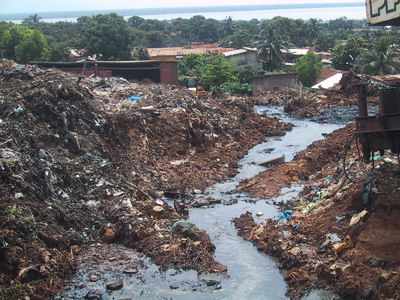
The Meaning of Sewage
Sewage literally means liquid waste that contains a mixture of human feces and waste water from non-industrial human activities like cleaning, washing and bathing. In several poor countries of the world, people openly dump sewage into local waterways, when there’s no available option.
Major risks are undoubtedly posed by untreated sewage to human health, owing to the fact that it contains waterborne infectious agents that can cause severe health issues to their hosts. Major risks to human health are posed by untreated sewage, since it contains waterborne pathogens (infectious agents) that have the potential to cause grave human illnesses. Moreover, untreated sewage can damage aquatic ecosystems and thereby threaten human livelihoods, when the connected biological oxygen demand and nutrient loading use up the supply of oxygen in the water to the extent that is too low to sustain life.
Putting Everything into Context
The World Health Organization (WHO) recently conducted a survey that estimated over 2 billion people lacked access to enhanced sanitation facilities, of which the lowest coverage was in sub-Saharan Africa, Eastern Asia and Southern Asia. Enhanced sanitation facilities completely remove human contact with fecal material and include composting toilets and pit or flush latrines/toilets. In
situations where water-based toilets are available, the wastes are way too often released into streams and drains, in the absence of treatment systems and costly collection. Resultantly, in several urban areas, surface waters are very contaminated with human waste. In places with pit latrines, seepage into water that flows or collects beneath the Earth’s surface is often a great issue. This is because several communities rely largely on shallow wells as their source of drinking water.
Poor communities in rural and urban areas where resources for investments in collection and treatment infrastructure are scarce are disproportionately affected by absence of access to improved sanitation, although the challenge of keep existing systems to cover human population from waterborne disease outbreaks even affects the richest communities in the world.
Exposure Pathways
There are two ways to discharge sewage: it can be intentionally discharged to waterways via open defecation or pipes, or unintentionally when rain is falling. When human beings use the affected waterways for washing and/or bathing, they become exposed to the connected pathogens, of which many have longer life span that enable them to live extensively in aquatic environments. People often become sick by drinking contaminated water, getting it into contact with their ears, eyes, skin, or even by preparing food with contaminated water. In some cases, human beings get sick from inhaling contaminated water droplets.
Health Effects of Untreated Sewage
Life-threatening pathogens like typhoid, cholera and dysentery are often carried by sewage. Sewage contamination of water result in other diseases include, but are not limited to, intestinal nematode infections, hepatitis A, schistosomiasis and various others. The World Health Organization (WHO) estimates that about 1.5 preventable deaths per year are as a result of inadequate hygiene or sanitation or unsafe water. Young children suffer most of these deaths. Another estimated 860,000 kids who are under five years old annually die as a result of malnutrition or underweight related to repeated intestinal nematode infections or diarrhea.
What is Being Done to Control the Situation
Globally, progress is gradually being made. In 2004, the World Health Organization estimated that only about 3.8 billion people had access to enhanced sanitation. And the world governing health body has set an ambitious target for this year (2015) of at least 75% global coverage. It is quite a challenge to meet this target, but so far, diarrheal illnesses that result from improper sanitation have been effectively proven to be minimized by a couple of interventions. These interventions include treating sewage before discharging, point-of-use water treatment, toilet/latrine installation, hygiene education, hand washing, and approaches that consist of several strategies.

